Commercial Sublease Agreement Templates
A commercial sublease allows both sublessor and sublessee to maximize available resources for mutual benefit. Both can help the other party benefit not only financially but also strategically.
Using a rental agreement has advantages for both the prime lease tenant and subtenant. However, you should also be wary of its cons.

Build Your Document
Answer a few simple questions to make your document in minutes
Save and Print
Save progress and finish on any device, download and print anytime
Sign and Use
Your valid, lawyer-approved document is ready
What is a Commercial Sublease Agreement?
When the original or prime tenant rents out a part of a commercial property, this is called a commercial sublease. The tenant will now act as a “sublandlord” in the commercial lease template and will enforce the third-party agreement.
To distinguish between the two contracts involved, you may refer to the following definitions:
- Commercial Prime Lease Agreement – This is the original lease contract between the original landlord and the original or prime tenant. This type of rent is also called a “commercial lease contract,” which is used by businesses. Another term for this is the “master lease.”
- Commercial Sublease Agreement— This is the contract between the subtenant and the prime tenant (also called the “sublandlord”). Since the property is most likely located in a commercial area, sublease tenants might also represent third-party businesses. This agreement is also called a “commercial sublet contract.” In this contract, the original landlord merely serves as the “final approver,” but it is the sublandlord who will handle any requests or concerns from the subtenant.
Pros and cons of the agreement
The pros and cons of a commercial sublease are listed below. Take time to read them to make sure this type of lease is right for you.
Sublessor’s perspective
PROS:
- This can be an additional source of income to support your prime lease rent.
- Any extra space will be maximized.
- You can have the opportunity to create a business partnership (if your subtenant’s business complements yours).
- The subtenant can give you a hand when cleaning shared areas in the property.
- Your subtenant’s customers can become your customers, too.
CONS:
- You will be responsible for the subtenant’s actions.
- There is a tendency for resources to be “borrowed” by the other business.
Subtenant’s perspective
PROS:
- Your business can be located in a commercial area without having to rent a big space.
- You can have the opportunity to create a business partnership with your sublandlord or another subtenant.
- You’ll get additional clients.
CONS:
- You are under a third-party contract and have no say about the prime lease. When the original lease term ends, the renewal of the sublease term will also be halted.
- You might have to clean the shared areas of the property.
- There is a tendency for resources to be “borrowed” by another subtenant or the sublandlord.
- If the original tenant allows a competing business to become a subtenant, you’ll have competition.
How to Sublease
Step 1 — Get a copy of the prime (original) agreement.
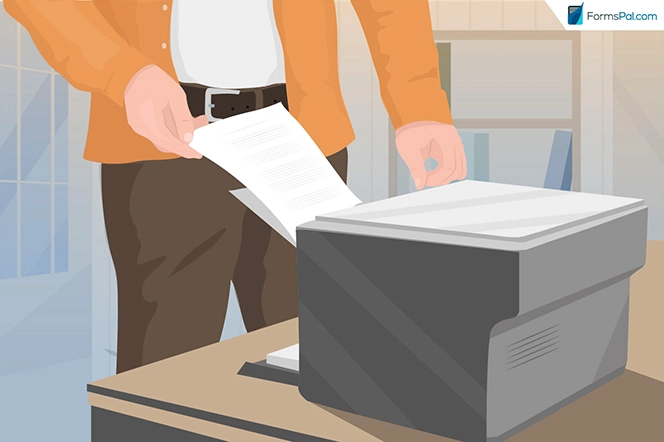
Once you have a photocopy of the prime lease, you can attach it to the commercial sublease agreement. Then, on your own copy, you may highlight crucial provisions. This will guide you when drafting the sublease agreement.
Step 2 — Ask for the landlord’s consent.

Check if the prime lease has guidelines on subleasing. Alternatively, you may ask the original landlord then let him or her sign a written consent form, which is included in the free sublease agreement below. If you fail to get permission, the landlord may contest the sublease or cancel the prime lease.
Step 3 — Calculate the rent.

Based on your existing rent per square feet, calculate how much you should charge for a smaller space or unit. To calculate this, you may refer to the formula below:
Prime lease’s Price per Square Feet ($/sqft.) x total square feet (sqft.) of the smaller unit
= Monthly rent for the subleased unit
Step 4 — Prepare the unit.

The unit must be in top shape so that you can get inquiries. After making repairs, you may take pictures. In a commercial sublease, it is usually better to leave the space unfurnished. Businesses usually have their own preference for the set-up, so the subtenant may want a blank canvas.
Step 5 — Find a subtenant.
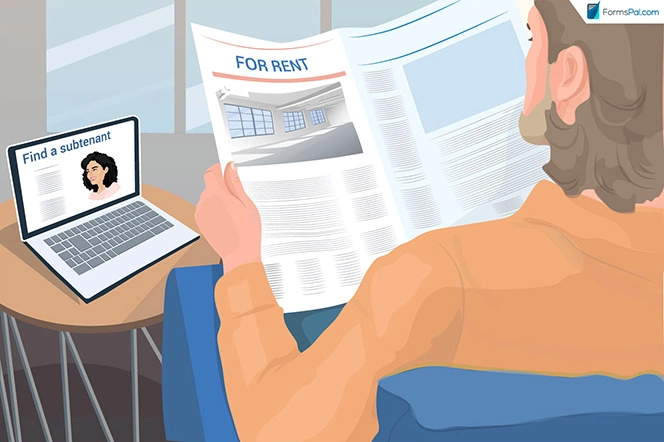
List the space online or in a local newspaper. Once you get inquiries, make sure to filter subtenants. It is important to consider their line of business and sales projection. As the master lease tenant, you must also ensure that subtenants’ businesses do not compete with each other.
Step 6 — Finalize the sublease contract.

Using the commercial sublease agreement template below, you may now go over the provisions with your subtenant. Once everything is agreed, you may finalize the contract by signing and having it notarized.
Commercial Sublease Agreement Form Details
| Document Name | Commercial Sublease Agreement Form |
| Other Names | Sublease Contract, Subletting Rental Agreement |
| Avg. Time to Fill Out | 8 minutes |
| # of Fillable Fields | 26 |
| Available Formats | Adobe PDF |
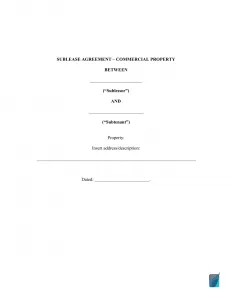
Filling Out a Sublease Agreement
Step 1 – Download the file below.
Below, choose the file type that matches your pre-installed format.
- Commercial Sublease Contract Template – Open Office Format (.odt)
- Commercial Sublease Contract Template – Microsoft Office Format (.docx)
Once the file opens, you’re good to go. You may then proceed to the next step.
Otherwise, if the sublease contract’s file fails to open, you’ll need to download and install any of the following:
- Open Office [Free]
- Microsoft Word [with payment]
Step 2— Complete the opening declaration.
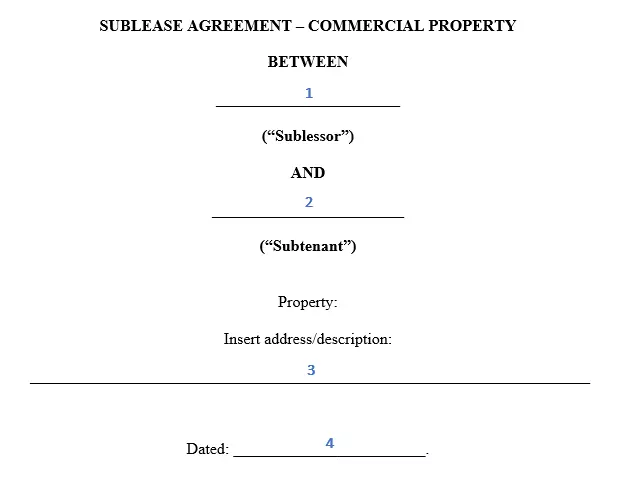
On the first page of the commercial sublease agreement, type the following details:
- Blank 1: Master lease tenant’s name. He or she is also called the “sublessor” or “sublandlord”.
- Blank 2: Subtenant’s name. He or she is also called a “sublessee”.
- Blank 3: Write the complete address of the property based on the original or prime lease. This must include the sublease unit or commercial space number, floor, building number, street name, county/city, state, and zip code.
- Blank 4: Add the date when the agreement will be signed.

On the next page of the agreement, you’ll also have to input the same details in the following sequence:
- Blank 1: Date
- Blank 2: Name of master lease tenant
- Blank 3: Name of secondary lease tenant or subtenant.
Step 3— Fill in the recitals.
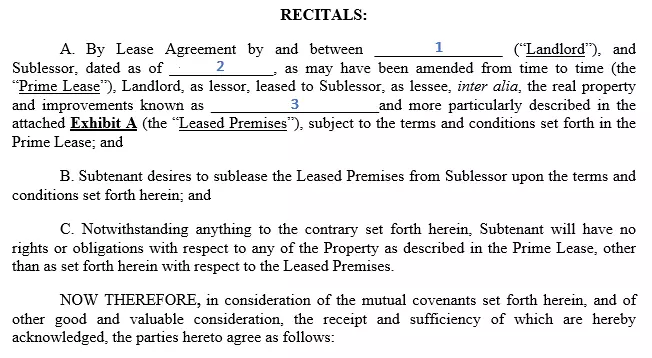
Likewise, you’ll also have to input some details that reference back to the prime lease.
- Blank 1: Name of the property owner (commonly known as the “landlord”).
- Blank 2: Date of the prime lease (you may refer to the original contract).
- Blank 3: The official address of the entire commercial real estate property.
Step 4— Read the fixed provisions of the sublease.
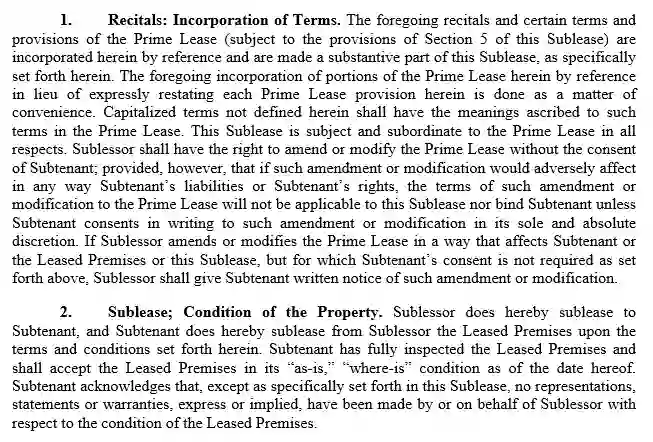
Sections one and two are standard across most sublease contracts. Still, it is crucial to read and check them.
Step 5— Write the details of the lease term.

- Blank 1: Write the date when the subtenant may move in. Alternatively, this could also be the same as the date of the sublease agreement.
- Box 2: Tick this box if the lease term is subject to monthly renewal, pending the confirmation of both the sublandlord and the subtenant.
- Box 3: Chose this box if you want to have a fixed number of months for the lease term (e.g. “Six Months”).
Note: You may ask for a security deposit from the subtenant. Just in case anything happens to the commercial space or the property, a security deposit of up to 150% can cover any repair cost or unpaid rent if the subtenant leaves prematurely. By the end of the term, the sublandlord must return this to the subtenant.
Step 6— Finalize the rent payment details.
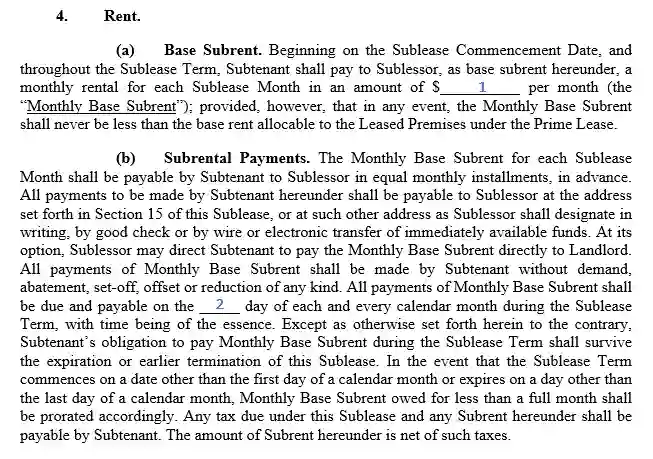
- Blank 1: Write the amount of rent for one month.
- Blank 2: Determine the date when the subtenant must pay the rent (e.g. “7th”).
Step 7— Review sections 5 to 14.
It is common for any lease agreement to have fixed sections regarding the primary lease. These are incorporated into the free sublease agreement template for the protection of the landlord, the sublandlord, and the subtenant. Once you have read and reviewed the following paragraphs, it is best to consult your legal counsel.
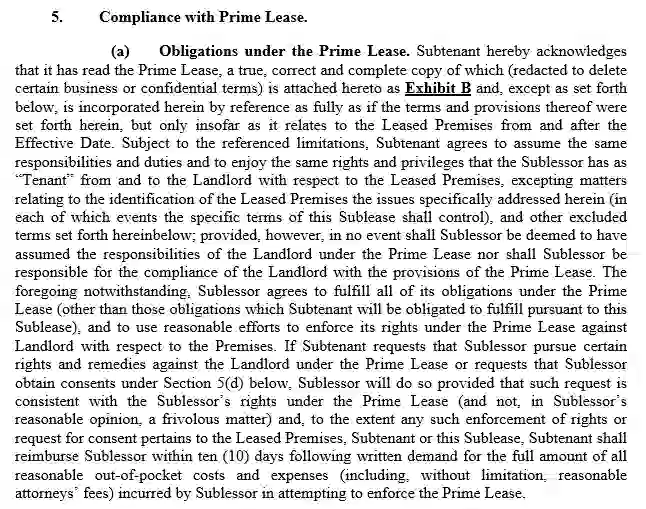
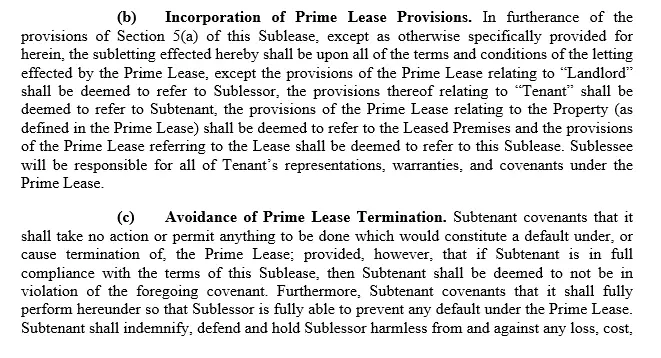
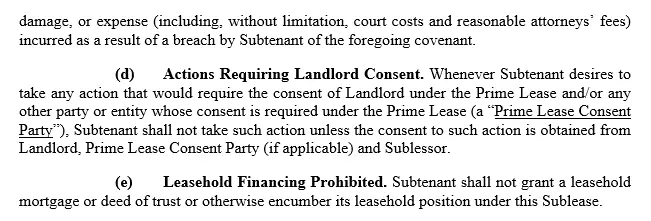
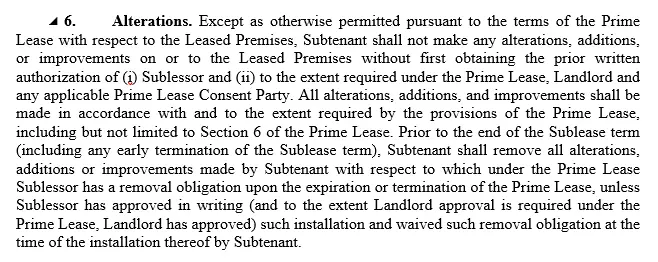
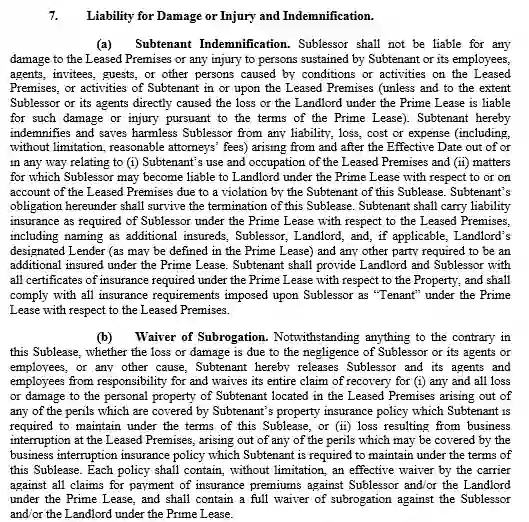

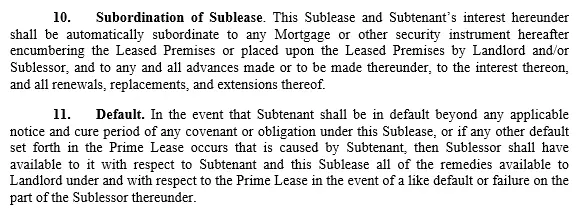
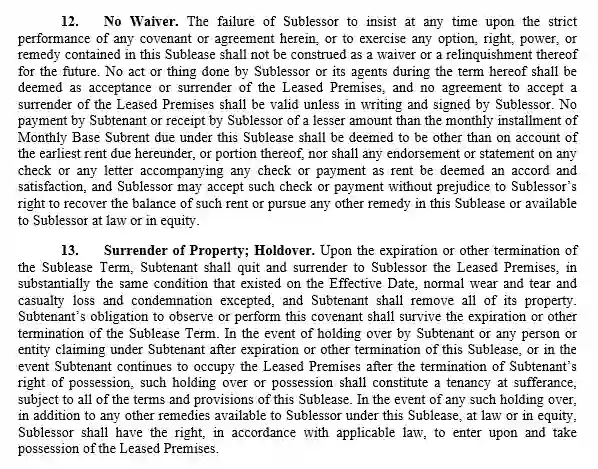

Step 8— Write the contact details for correspondence.

Both the master lease tenant and the subtenant must properly document any critical communication between them. Therefore, section 15 must contain their contact details. On the space provided, write the following:
- Blank 1: Name of original lease tenant, e-mail address, and commercial space address.
- Blank 2: Name of the original lease tenant’s representative, e-mail address, and address.
- Blank 3: Name of the subtenant, e-mail address, and commercial space address.
- Blank 4: Name of the subtenant’s representative, e-mail address, and address.
Step 9— Check sections 16 to 19.
The provisions in sections 16 to 19 are, once again, standard in any sublease agreement. Make sure you still check if you agree to everything.
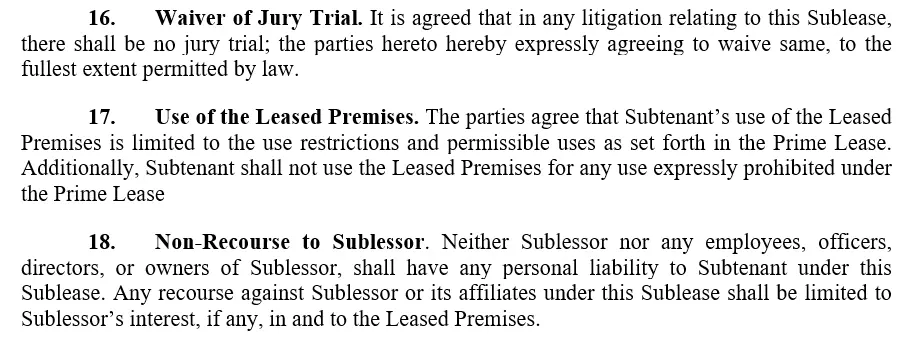
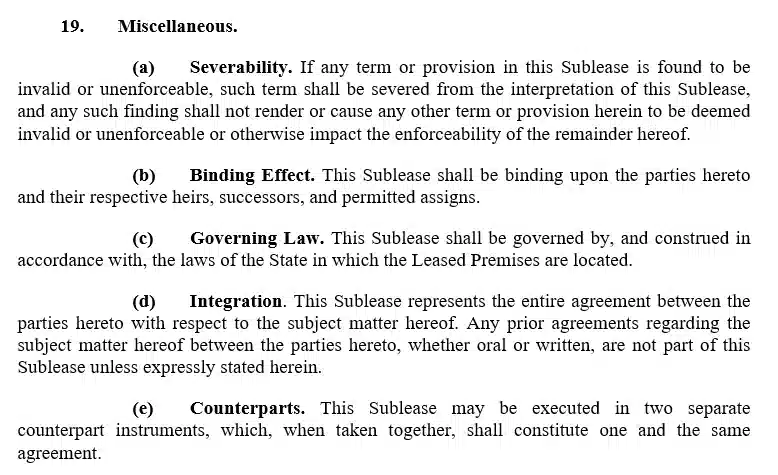
Step 10— Sign the sublease agreement (sublandlord and subtenant only).
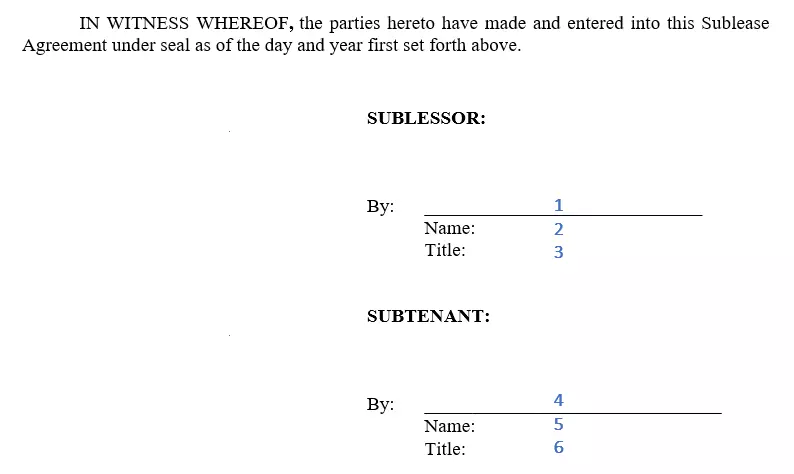
Once the primary tenant and the subtenant agree to all the terms, they must indicate the following details:
- Blank 1: The master lease tenant must affix his or her signature.
- Blank 2: The tenant must then write his or her name in print.
- Blank 3: If he or she has a position in a company (e.g. president) include it on the space marked #3. Below this, write the company name.
- Blank 4: The master lease tenant must affix his or her signature.
- Blank 5: The subtenant must write his or her printed name.
- Blank 6: If he or she has a position, include it on the space marked #6. Below, write the company name.
Note: The signatures of the primary tenant and the subtenant should also be affixed on each page of the sublease agreement.
Step 11— Acquire consent to sublease.
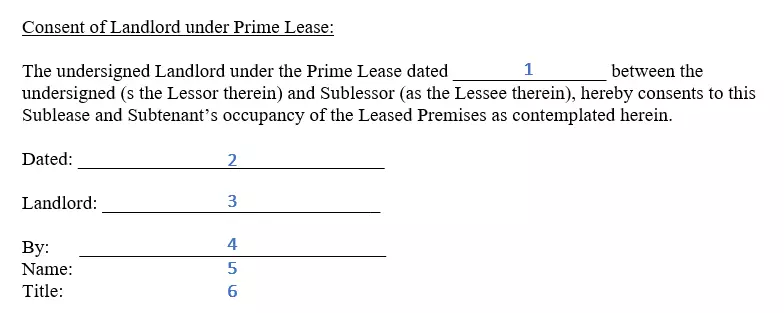
Most original leases (or “prime leases”) require the tenants to get the permission of the landlord. Though some states do not implement this strictly, you may need to at least inform the property owner or original landlord. In this section, fill out the blanks as follows:
- Blank 1: Copy the “effective date” from the prime lease and add it here.
- Blank 2: The date when the primary landlord gave the consent
- Blank 3: Full name of the landlord or property owner
- Blank 4: The signature of the landlord
- Blank 5: If the landlord holds a position in a company (e.g. president), type this on the space and add the company name below it.
Step 12— Add attachments.
For the next pages of the contract, you may attach the master lease, an inspection form, or a property location map. In addition, you may want to attach some house rules for the subtenant. You may also add any relevant correspondence between the original landlord and the sublandlord like changes to the contract or new rules.
Though a sublease can be more detailed than regular lease agreements, it can benefit both the sublandlord and the sublessee. This third-party contract can give their businesses a strategic advantage not only financially, but also in terms of marketing and some business operations.
